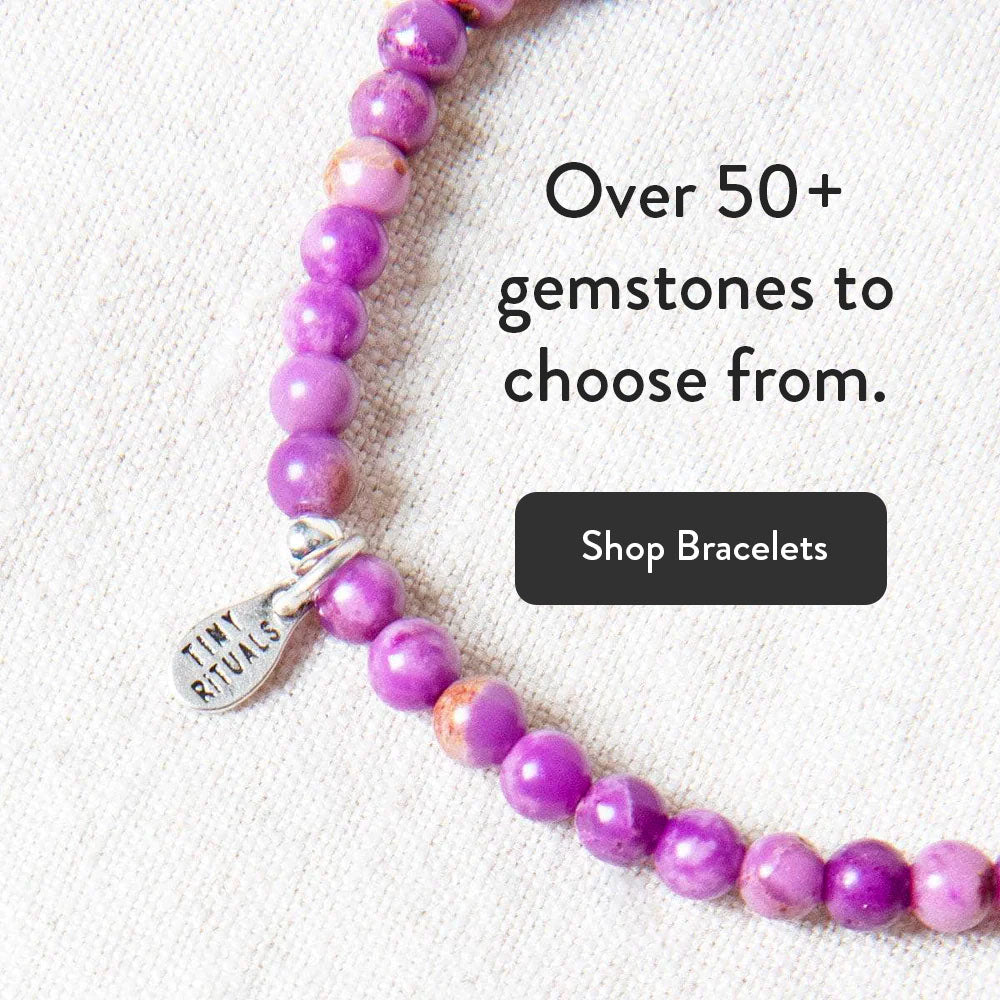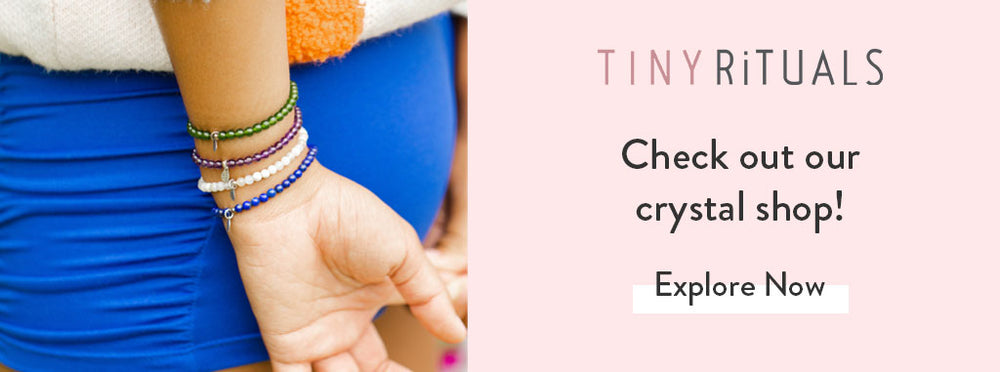
Check out our January Birthstone Necklace
Gorgeous Garnet is the January birthstone. For those born under the first month of the year, January is a time of bright beginnings. It takes its name from Janus, the Roman god of beginnings and ends - he who could turn his face to the past while looking forward. This matches the mood of Garnet, a gemstone famed for helping usher in positive thinking while keeping you connected to protection, prosperity, and good health. We take a closer look at Garnet as the symbol of January birthstone jewelry.
The Color Spectrum of Garnet
While most people associate the stone with its deep shades of red, Garnet comes in a range of colors. The rich color red garnet, also known as the pomegranate stone, needs little introduction as it is the poster child of garnet gems. Yet, you can also get green garnet, Spessartine Garnet with its yellow-gold and orange color, Almandine Garnet with its earthy, warm red hues, Pyrope Garnet with its beautiful color of deep pink, and Andradite Garnet with its olive green color, and Uvarovite Garnet with its rare emerald coloring. There's also Tsavorite Garnet, one of the rarest gemstones - even rarer than emerald, and Mandarin Garnet, with its vivid orange warm color. As you can see, beyond the blood-red hues, Garnet is a versatile gemstone blessed with a wide variety of colors.
Historical Significance and Lore

Garnet has been considered one of the most beautiful gemstones, even as far back as ancient times. This gemstone has a long and storied meaning—its name comes from the Latin word 'granatus', which translates to pomegranate, as the precious stone shares its jeweled hues with the seeds of the fruit.
The Garnet has been celebrated throughout history, from biblical texts to Egyptian Pharaohs and an endless array of myths and legends. It was considered the only light source on Noah's Ark. In Ancient Egypt, Garnets were believed to be able to ward off evil spirits and were placed in the tombs of pharaohs to protect them on their passage to the afterlife. In Ancient Rome, the Garnet was often the favored stone for signet rings. In Medieval Europe, Garnet was often found adorning crowns, scepters, and religious artifacts. This echoes across the world, with Garnet being associated with blood, vitality, course, and passion.
Symbolism and Healing Properties
With their glowing-like light and rich colors, Garnet crystals have long been considered protective and powerful stones. Warriors often carried them into battle, turning to the stone for protection, courage, and strength. It was also carried as a talisman by travelers seeking safe passage - from roadmen to sailors wanting protection from the storms. Some also believed that Garnet could protect them from bad dreams, and the stone was placed under the pillow to usher in sweet dreams.
Beyond its metaphysical powers, Garnet was also believed to have physical healing powers. It was believed to serve as a remedy for inflammatory diseases and soothe an angry heart. Garnet was also believed to bring calmness to high emotions, cure depression, and diminish negative feelings as it encouraged passion, life, vitality, and pure joy.
Garnet's Geographical Sources

Garnets are mined in a wide range of places - including Namibia, Tanzania, Madagascar, India, Brazil, and the United States. Namibia is known for producing high-quality Spessartine garnet species. The Umba Valley in Tanzania can produce Rhodolite Garnets, which are beloved for their deep raspberry and purple hues. Madagascar is known for producing all kinds of Garnet crystals, especially the vivid green variety of demantoid Garnets. India, and in particular Rajasthan, is known for its extraordinary range of deep-red Almandine Garnets. Brazil and the USA both produce many types of garnet.
Care and Maintenance
The traditional stone of Garnet makes for a beautiful birthstone, but it's essential to keep it clean to enjoy its startling beauty. Garnet is a 6.5 - 7.5 on the Mohs scale of hardness, which is relatively tough but still susceptible to damage. The best way to cleanse your garnet is to use soapy water, a soft brush, and a mild detergent. Always make sure to dry your birthstone jewelry thoroughly. Be sure to avoid any harsh chemicals or abrasive cleaners when it comes to your Garnet birthstone, as you want to avoid scratching the surface and damaging your perfect Garnet. When not wearing your Garnet jewelry, you may want to store it away from your other gemstone jewelry to avoid it getting scratched. You also want to store it in a cool, dry place away from extreme temperature changes, which could affect the color of the stone.
Garnet in Jewelry Design

There's a reason Garnet jewelry has been around for centuries: it has such timeless appeal. From the ancient world to Medieval magic and our modern world, Garnet lends itself well to any time period. Garnet makes excellent jewelry stones for those seeking traditional settings. It also comes loaded with light and life, making it perfect for modern designs that showcase a broader color palette. Garnet looks stunning when paired with white diamonds or other stones that highlight its bright and beautiful appeal. You can wear Garnet necklaces for a show-stopping piece or choose a delicate Garnet ring, Garnet stud earrings, or Garnet bracelets to carry that powerful and protective energy with you.
Modern Appeal and Significance
Garnet has such significant appeal in our modern world, not just as a January birthstone but as a beautiful gemstone chosen for its undeniable beauty, the rich tapestry of colors, and emotional and health benefits.
The endless array of colors lets you enjoy the significance of the Garnet stone without being locked into one color. Whether you want a yellow-gold garnet, a vivid green, or a deep-red gemstone, you can have it all with the Garnet family. Always be sure to buy your crystal bracelets, zodiac bracelet sets and birthstone necklaces from a crystal shop you trust.
Conclusion
The Garnet stone is perfectly suited to the month of January, and this is why it represents the month of new beginnings, bright positivity, and forward-thinking. It brings light, protection, and powerful, optimistic living, which seeps into everything you do. This, combined with its beauty, diversity, and deep historical and cultural significance, ensures you have a birthstone that can accompany you through life. Look deeper into the dreamy nature of Garnet and find out why this should be part of the gorgeous pieces you add to your everyday wear.
FAQs
What stone is 2 January
Garnet is the beautiful birthstone of January and is known for its rich cultural and historical significance. It comes in many colors, not just the famous deep red. You can also find different types of Garnet in oranges, greens, pinks, and more, making it a truly versatile gem.
Which months have 2 birthstones
For those born during June, August, October, November, or December, you will have more than one birthstone to choose from. Most of these months have at least two birthstones to choose from.
What Colour is February birthstone
The February birthstone is Amethyst, a purple gem that comes in a spectrum of shades, from the palest lilac to deep purple red. It is known for being calm, soothing, and deeply spiritual.
What does red garnet symbolize
Red Garnet is the symbol of blood, life, passion, power, joy, and protection. It has a long and lush history and is connected to the month of January as the birthstone. Traditionally, it was believed that Garnet symbolized blood, and blood symbolizes life. Thanks to its rich red shades, it is also a symbol of light known as the pomegranate stone.













